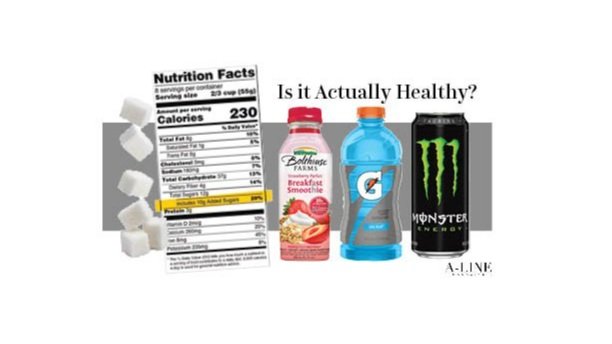Is It Actually Healthy?
One’s health is considered to be one of the most important aspects of someone's life. Due to this, many people make sure to exercise on a regular basis, while a lot of people focus on a bigger change in their lives in order to become healthier, like incorporating a healthier diet. However, many people might think that they are making healthy food decisions, when they are actually doing the opposite.
So how can you know if it is healthy or not? You can easily answer this question by looking at the labels that are required to be placed on the back of every food product. This will tell you all of the information that you will need to know about the product's ingredients. The prime suspect that has been sneaking its way into most food products is sugar. There is artificial sugar in more products than you might have realized, so it is always a good decision to check the label before placing it in your cart. A food product that you might have not realized stored a lot of sugar in it is tomato sauce. Some bottles of this sauce can contain up to 10 grams of sugar, which is equivalent to many cereals.
Now, I don’t want to scare you away from the word sugar when talking about food. There are many products that have naturally occurring sugars in them that are actually healthy for you. This includes fruits, such as strawberries, blueberries, bananas, apples, along with many more. It is generally the artificial sweeteners that you want to steer clear from.. Other common ingredients to watch out for in typically “healthy” foods are high fructose corn syrup, artificial flavors, and any color dye. Rule of thumb is, if you don’t recognize a lot of the ingredients on the label, you most likely shouldn’t purchase.
The marketing of the food product is one of the most deceptive things when someone is shopping for healthy products. Many terms that should never be trusted are “diet”, “sugar-free”, and “lite”. These terms are used to lure in the group of people who are thinking that they are making a healthier choice by choosing their product, when in reality, all they are doing is covering up the unhealthy things that are in their product. For example, yogurt is marketed as being a super healthy breakfast or snack option. However, many yogurts claim to be packed with protein on the packaging when they only contain a few grams of it. Also, if you purchase the flavored versions, they contain high levels of sugar in just a little cup.
Another example of a marketing scheme that has tricked people for years, is the creation of “lite” or “diet” sodas. They claim to be much healthier than their counterparts by commonly having 0 calories and 0 sugar. While these amounts are typically true, they unfortunately make up for the lack of sugar with artificial sweeteners that are being masked by the marketing. These sweeteners have been known to increase the average person’s risk of getting type 2 Diabetes, which shows that the marketing can truly trick many people into their fake health illusions.
There are many companies that market their healthy products in stores and online correctly, so don’t let this article instill any trust you have in every company. However, it is always a wise decision to turn over the package to the food label and check for yourself and make sure. If you don’t fall for the marketing on the packaging and always look at the food label, you will never be fooled again!
Written by Grace Kauderer, Photography: Savannah Patterson, Design: Taylor Gustafson, Social Media: Mia Coppola


